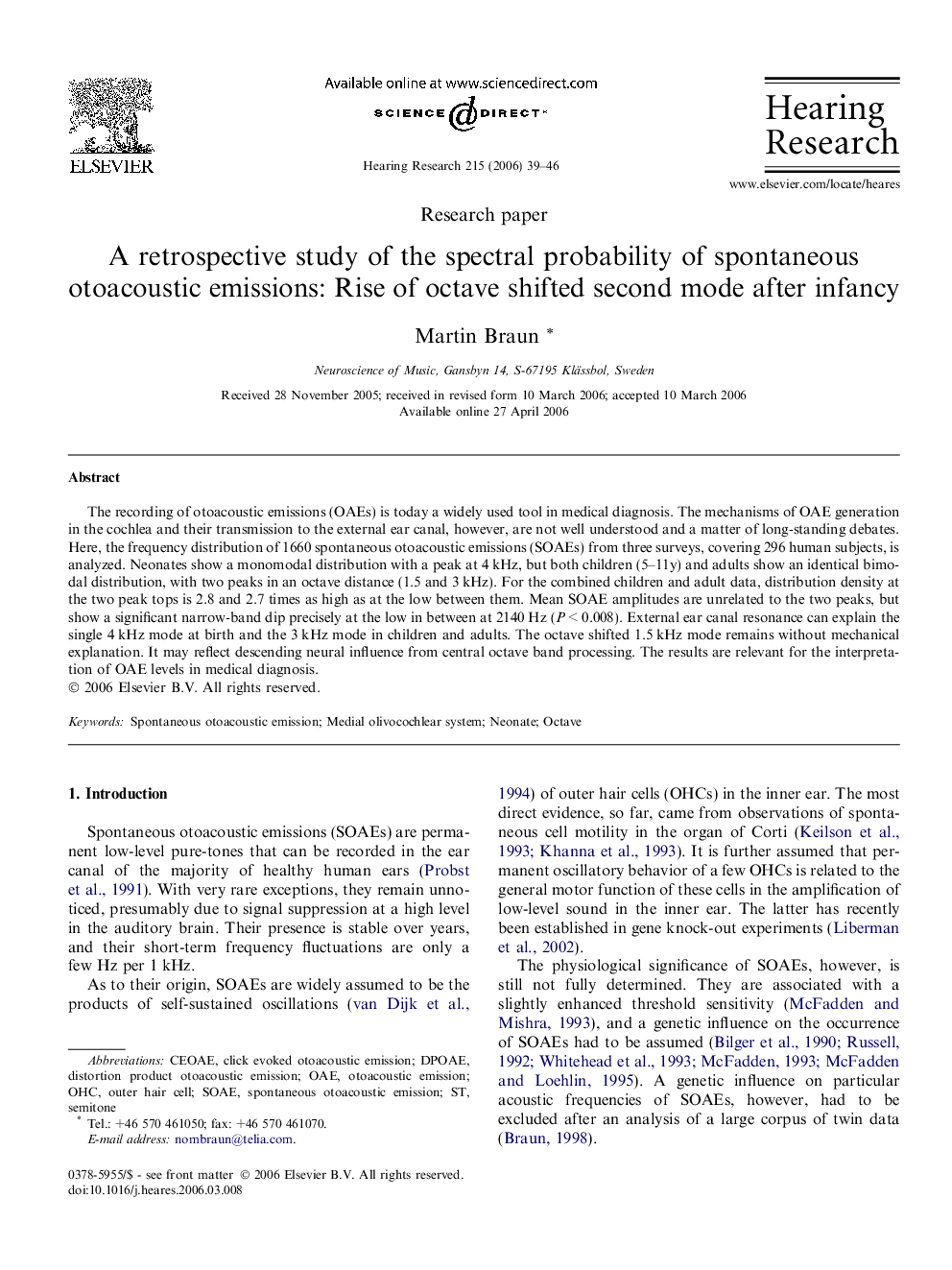| کد مقاله | کد نشریه | سال انتشار | مقاله انگلیسی | نسخه تمام متن |
|---|---|---|---|---|
| 4356486 | 1615683 | 2006 | 8 صفحه PDF | دانلود رایگان |

The recording of otoacoustic emissions (OAEs) is today a widely used tool in medical diagnosis. The mechanisms of OAE generation in the cochlea and their transmission to the external ear canal, however, are not well understood and a matter of long-standing debates. Here, the frequency distribution of 1660 spontaneous otoacoustic emissions (SOAEs) from three surveys, covering 296 human subjects, is analyzed. Neonates show a monomodal distribution with a peak at 4 kHz, but both children (5–11y) and adults show an identical bimodal distribution, with two peaks in an octave distance (1.5 and 3 kHz). For the combined children and adult data, distribution density at the two peak tops is 2.8 and 2.7 times as high as at the low between them. Mean SOAE amplitudes are unrelated to the two peaks, but show a significant narrow-band dip precisely at the low in between at 2140 Hz (P < 0.008). External ear canal resonance can explain the single 4 kHz mode at birth and the 3 kHz mode in children and adults. The octave shifted 1.5 kHz mode remains without mechanical explanation. It may reflect descending neural influence from central octave band processing. The results are relevant for the interpretation of OAE levels in medical diagnosis.
Journal: Hearing Research - Volume 215, Issues 1–2, May 2006, Pages 39–46